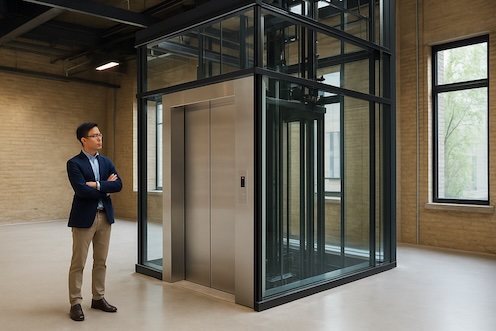In an old red brick factory building in the Yangtze River Delta, Chen Ming's renovation plan has come to a standstill. The second floor, which was originally intended to build a "cultural and creative center," was filled with raw materials, but it was unable to be transported up for a long time. The team once relied on hydraulic lifting platforms to transport materials such as bamboo weaving and pottery, but an overload caused the steel cable to break and 300 kilograms of soil to fall, almost injuring the workers.

Logistics difficulties and negative reviews
There are over 20000 industrial heritage factories in the country, of which 63% have encountered vertical transportation difficulties during renovation. Entering the era of e-commerce live streaming, logistics speed directly determines reputation. Competitors shout '30 minute delivery', while Chen Ming's team takes 20 minutes to move a piece of cloth. Negative reviews followed one after another, with 40% pointing to 'inconvenient delivery'.
Disappointing attempts at standard elevators
The commercial elevator company quoted up to 1.2 million yuan, with a construction period of 9 months, and also required the installation of a shopping mall level sprinkler system in a 6-meter-high factory building. The household elevator is also not suitable: a "mini elevator" can only bear 200kg, and the so-called "safety certification" by the sales staff only shows a Tiktok video.
Industry Trap
The survey shows that there are three common problems: 75% of elevators are forcibly installed in unsuitable environments; 40% of small and medium-sized manufacturers disappear after signing contracts; The elevator, which claims to be "energy-saving", actually consumes three times more electricity than ordinary models. As an engineer once said, this is simply 'putting a truck engine on a yacht'.
Breakthrough Design
It was not until the seventh inspection that Chen Ming met a professional team. They used drones and 3D scanning for modeling, and the proposed solutions include: installing a "zero load car" using the existing crane tracks in the factory building; Realize dynamic carrying through IoT sensors; When descending, recover potential energy and convert it into warehouse lighting power. The cost of 420000 yuan not only solved the transportation problem, but also became a highlight of the space. Displaying intangible cultural heritage crafts inside the transparent shaft, making the elevator ride itself a "cultural experience".
From Burden to Highlights
After the elevator is put into use, the efficiency is increased by 300%. Even more surprisingly, a well-known architect posted a design case on social media, attracting over 200 cultural and creative enterprises to consult. Experts point out that the renovation of elevators in old factories is showing three major trends: modular manufacturing, display of shaft culture, and data-driven optimization.
The symbol of rebirth
Under the sunset, Chen Ming stood on the roof, watching as the elevator slowly lifted visitors up. The former "trouble box" has now become a "time tunnel" connecting industrial memory and modern creativity, and has paved a shining golden staircase for hardworking people.
